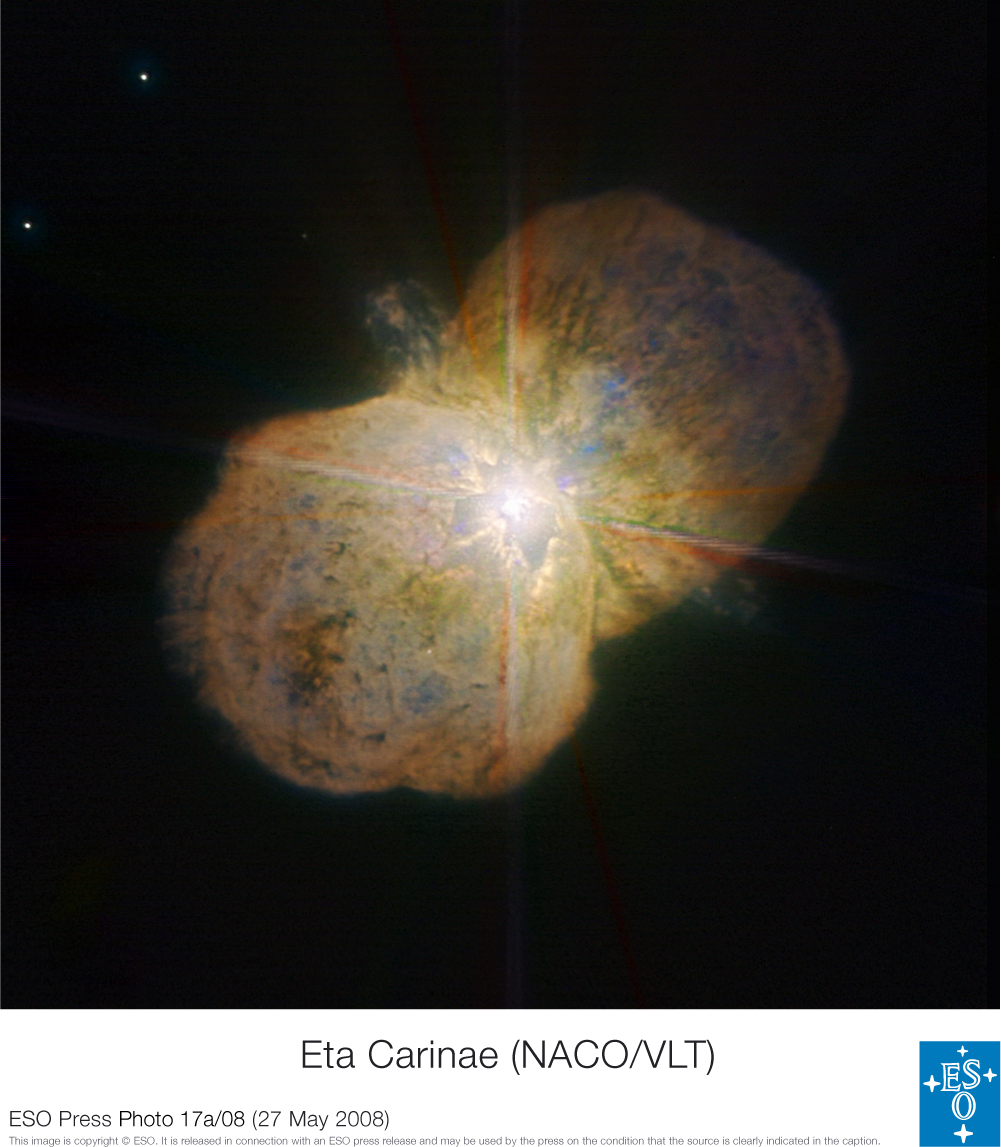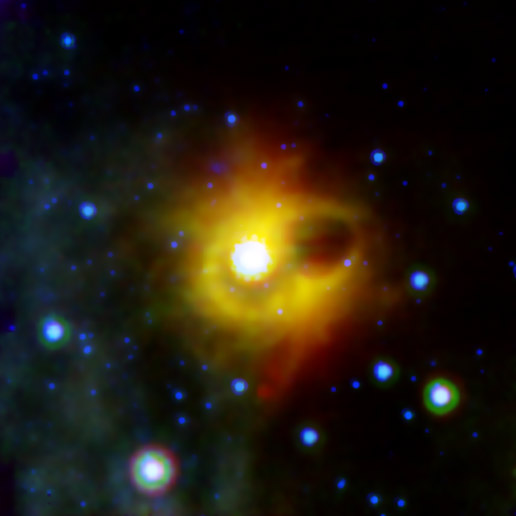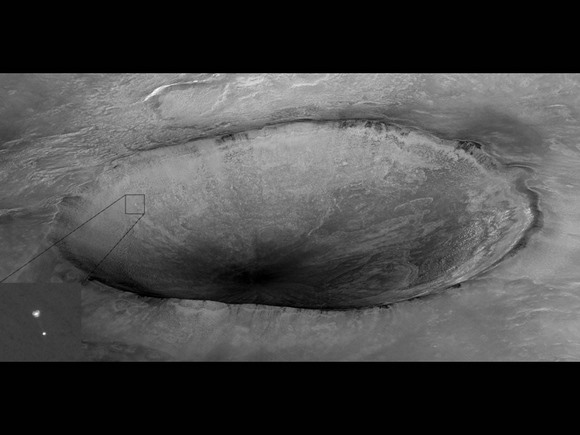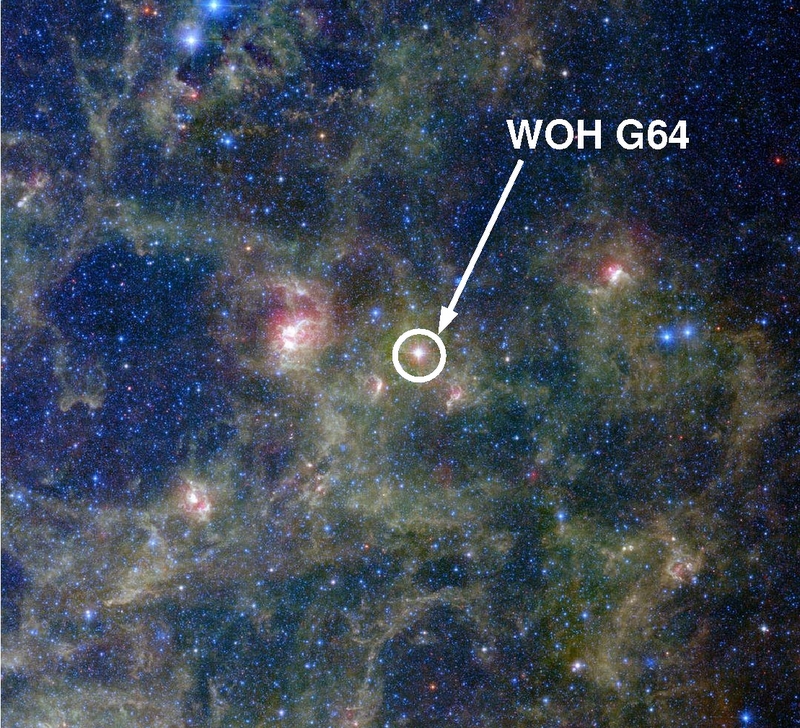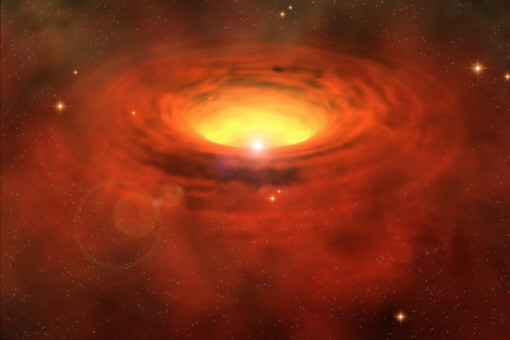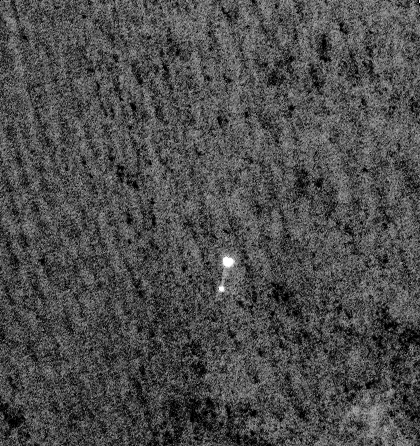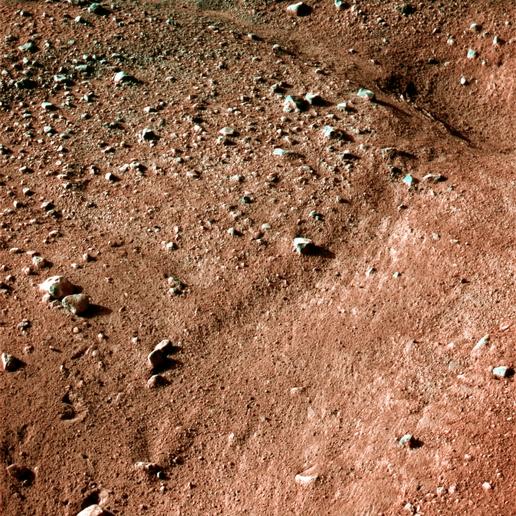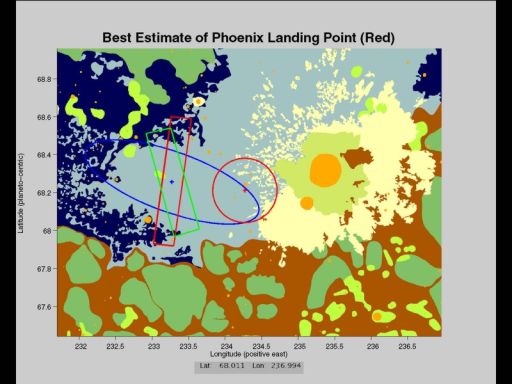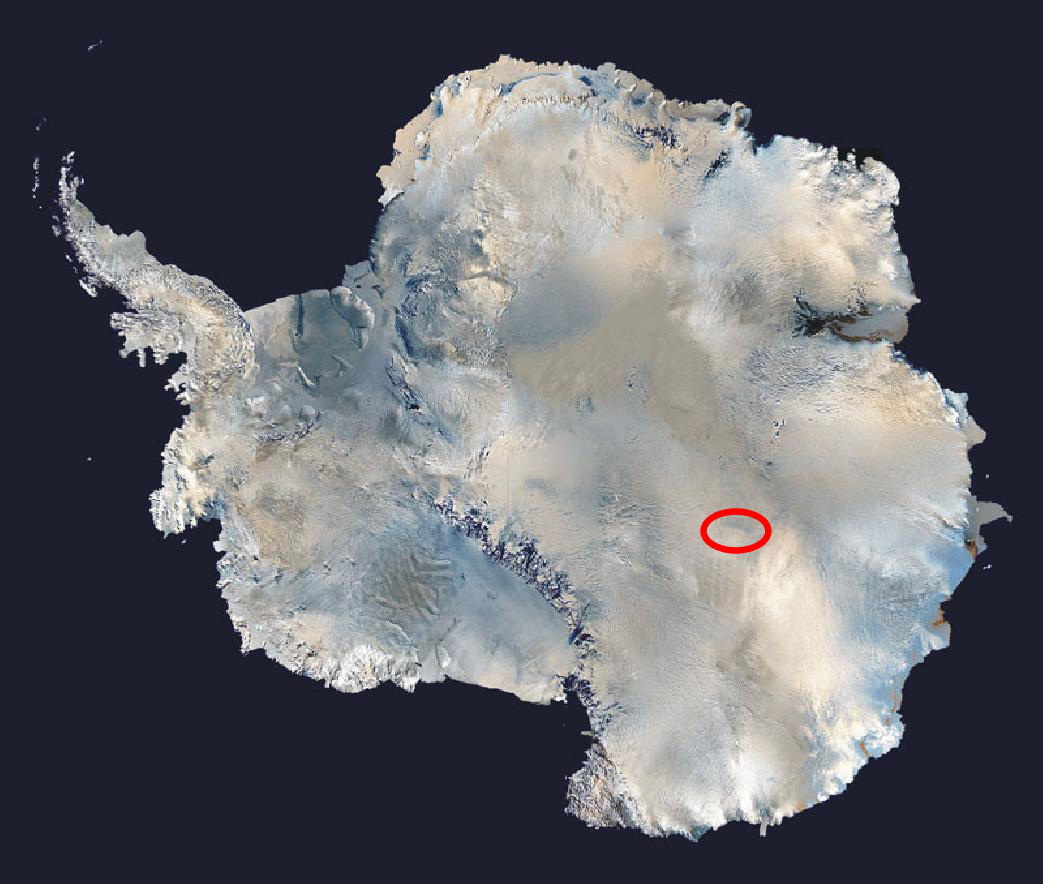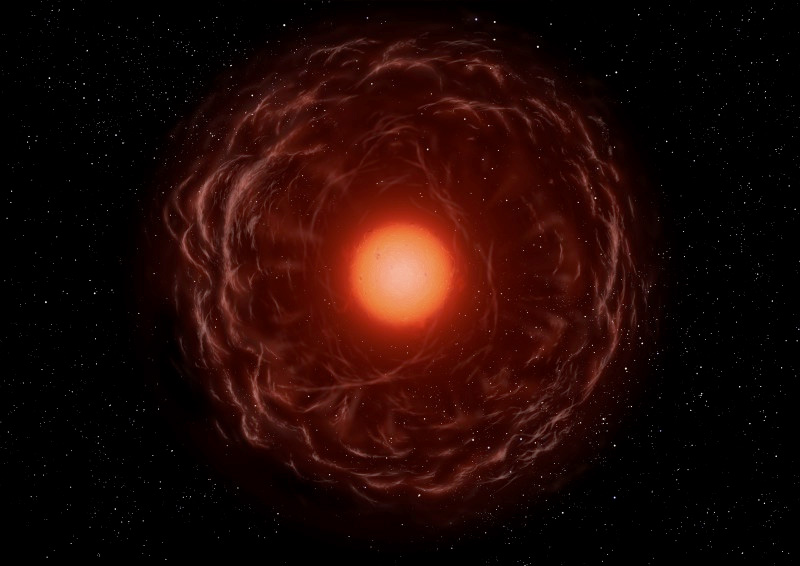To celebrate the Very Large Telescope’s (VLT) 10th birthday on Tuesday, it was us who received the gifts. The European Southern Observatory (ESO) released two magnificent astronomical images of two nebulae, both very different, but spectacular all the same. One is the iconic scene of Eta Carinae (a.k.a. Homunculus, “little man” in Latin, pictured), the nebula produced by a single dying star just before it goes supernova. The second is of the large nebula NGC 3576, setting the scene for the “Cosmic Cauldron”, where the clouds are constantly churned up by the birth of newborn stars. These new images have applied some of the most advanced astronomy techniques to remove atmospheric blurring, bringing us the most detailed look into these nebulae we have ever experienced…
The VLT is located high on the Chilean mountain of Cerro Paranal, over 2.5 kilometres (1.5 miles) above sea level. The Atacama desert in northern Chile provides ideal, stable observation conditions to resolve the fine structure of astronomical objects four billion times fainter than what can be observed with the naked eye. The observatory consists of a group of four 8.2 metre telescopes, and an astronomical interferometer. For the last ten years the VLT has produced some of the most iconic images in the history of astronomy. The VLT was one of the first observatories to capture infrared images of extrasolar planets 2M1207b and GQ Lupi b. It also discovered the most distant gamma-ray burst and possibly the farthest observed (and therefore youngest) galaxy ever discovered, Abell 1835 IR1916. It has also uncovered evidence that there may be a supermassive black hole sitting in the centre of our galaxy. Still, it captures some of the deepest images of space we have ever seen.
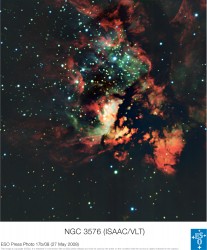
Probably the most familiar image is of the twin bulges of the clouds of hot matter being blown from the dying bright star of Eta Carinae (pictured top). This is one of the finest examples of a star going through the last phase of its life as a “luminous blue variable”. The hot gas forming the “Homunculus” originates from a great outburst observed in 1843 and some time in the next 100,000 years, the star will die, exploding as a supernova. This new image is 6 to 7 times better resolved than previous images of Eta Carinae as the VLT has applied some of the most advanced adaptive optical technology (called NACO) to remove the blurring effect of the atmosphere. Now, the fine scale of Eta Carinae can be seen, clearly showing the jets blasting from the central star and the bipolar structure.
A second (bigger) nebula can also be found in the direction of the constellation of Carina, it is called NGC 3576. This vast region (stretching 100 light-years across) is located in a volume of space far beyond Eta Carinae, some 9,000 light-years from the Earth. The image of NGC 3576 (pictured above) shows, in awesome detail, the violent nature of the cradle for newborn stars. The nebula is thought to be very young, only 1.5 million years old, with massive stars emitting intense radiation and stellar winds, ejecting the clouds from where they grew up.
Researchers from the University of Cologne in Germany are studying NGC 3576 using the VLT to deduce the number of young stars that still have protoplanetary disks. From this study, astronomers hope to understand the lifetime of these planet-forming disks, how the star’s radiation influences lifetime and how stellar collisions will affect disk evolution.
For now, I’ll leave the science to the researchers and enjoy the beauty of these striking VLT images…
Source: ESO


